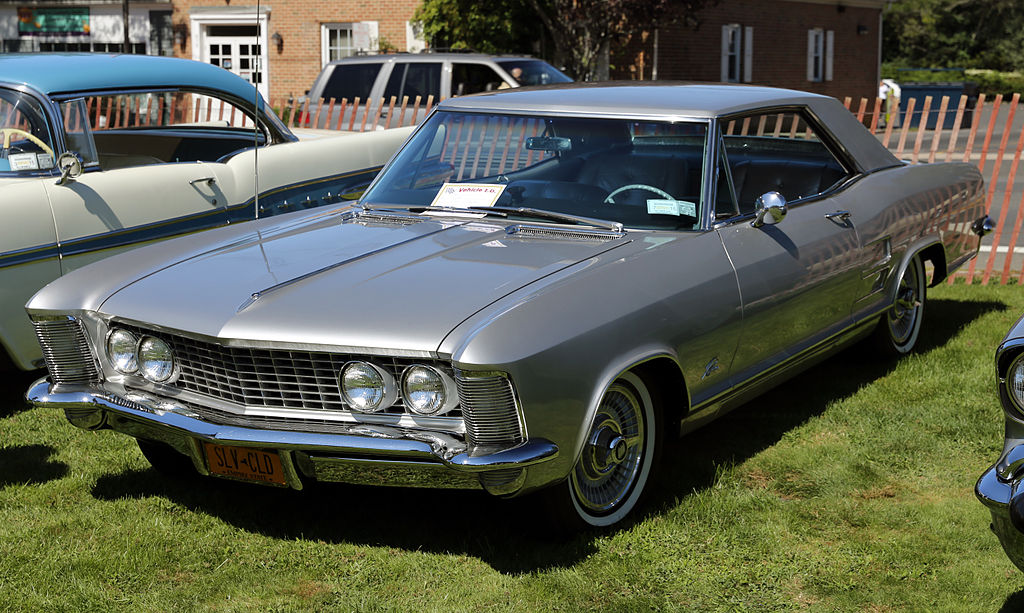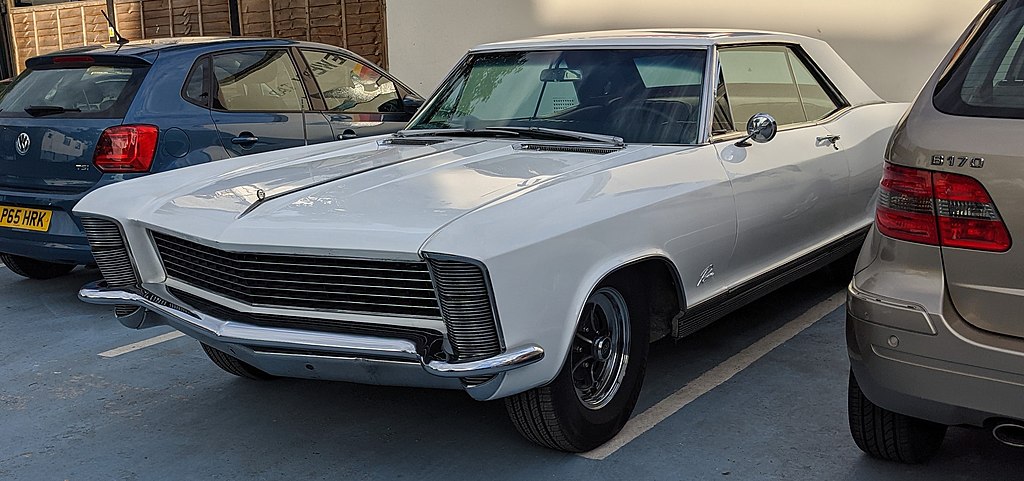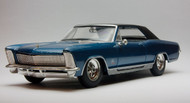Buick Riviera’s sexy styling in the ’60s
Posted by Dale Edward Johnson on Dec 15th 2022
The incredible success of the Ford Thunderbird prompted General Motors to respond with the Buick Riviera.
Ironically, the original two-seater Thunderbird, introduced for the 1955 model year, was Ford’s response to another GM product, the Chevrolet Corvette. The T-Bird offered more luxury touches and outsold the Corvette.
For 1958, Ford decided to aim for a bigger market by offering a bigger Thunderbird – a four-seater. Sales really took off and during the first three-year run of the new four-seater, sales quadrupled over the run of the two-seater.
Clearly, GM needed to get in on this new emerging personal/luxury car segment, which Ford had all to itself with the T-Bird.
Introduced for the 1963 model year, the Riviera, offered only as a two-door hardtop, was one of the most stylish cars of the 1960s. The name came from a Buick with a strong and proud history.

Vetatur Fumare, CC BY-SA 2.0 <https://creativecommons.org/licenses/by-sa/2.0>, via Wikimedia Commons
The Riviera name was first used by Buick in 1949 on a new hardtop convertible model, so named because it looked like a convertible with the roof up – but the roof was actually metal and could not be moved. This idea for this body style came from the wife of a Buick executive who loved her Buick convertible, but would only drive it with the top up so that her hair would not get messed up by the wind. The stylish Buick Riviera did away with the post behind the front door. The hardtop body style would go on to dominate the auto industry in the 1950s and ’60s. Buick used the Riviera name on a variety of hardtop models throughout the 1950s and early ’60s.
Then in 1963 the Riviera name was transferred to a completely new Buick aimed at the Thunderbird.
Early design models used the LaSalle name, a name previously used on a lower-priced Cadillac companion make. However, when it came time for production, the project was handed to Buick. There were several reasons: Cadillac and Chevrolet were enjoying strong sales, Pontiac was developing its performance image, and Oldsmobile was focused on developing the new front-wheel-drive Tornado, which would be introduced in the fall of 1965. But Buick had been struggling in sales, so was in need of a new model to attract buyers, so was given GM’s first personal/luxury car.
The new Riviera used many existing Buick parts, but sat on a new 117-inch wheelbase, making it about 14 inches shorter than full-size Buicks. Power came from a 401 V-8 mated to a two-speed automatic transmission. Only one body style was offered, a two-door hardtop with bucket seats and a console. The styling was clean and crisp, with sharp edges and a minimum of chrome trim. GM styling boss Bill Mitchell wanted the Riviera to be influenced by European makes, and included some styling elements from Rolls-Royce and Ferrari. For example, the Riviera has a small, formal rear window, and at the front there was an egg crate grille with vertical parking lamp housings on each side. With a price of $4,333 the Riviera was the most expensive Buick.
The Riviera was an immediate hit, and quickly changed Buick’s stodgy image.
For 1964, an optional engine, a 425-cid 360-hp, was available, and a three-speed automatic transmission was made standard.
For 1965, the headlights were hidden behind the large vertical grills on each side of the front end, and the rear taillights were relocated into the bumper. As well, an optional Gran Sport package was offered.

Calreyn88, CC BY-SA 4.0 <https://creativecommons.org/licenses/by-sa/4.0>, via Wikimedia Commons
For 1966, the Riviera was restyled, and it was two inches longer. For 1967 a new 430 cubic inch engine was offered in the Riviera, as well as other large Buicks.
Sales of Rivieras grew each year, and for 1969 reached 52,872 units.
But the competition in the personal/luxury segment was growing. New competitors included the Oldsmobile Tornado and Cadillac Eldorado – and within a few years the Pontiac Grand Prix, Chevrolet Monte Carlo and Chrysler Cordoba, and others, would take a bite out of Riviera sales.
The next major restyle came for 1970. The Riviera grew, and rear fender skirts were added. Sales declined, and for 1971 a huge rear window was added, and this so-called boat-tailed Riviera lasted for three years.

Noah Wulf, CC BY-SA 3.0 <https://creativecommons.org/licenses/by-sa/3.0>, via Wikimedia Commons

Kevauto, CC BY-SA 4.0 <https://creativecommons.org/licenses/by-sa/4.0>, via Wikimedia Commons
For 1974, the Riviera became less distinctive looking. Sales declined, as consumers turned to smaller, more fuel-efficient vehicles. The Riviera was downsized during the 1980s, and sales continued to slide.
Buick announced an all-new, larger Riviera for 1994. It was like no other Buick, and it was elegant and powerful. There was room for six people, and it was praised for handling and performance. Sales jumped to more than 41,000 units. It was the Riviera’s last hurrah. Sales quickly declined and the final year for the Riviera was 1999.
Car buffs today especially appreciate Rivieras from the 1960s, as well as the boat-tail version from the early 1970s.
